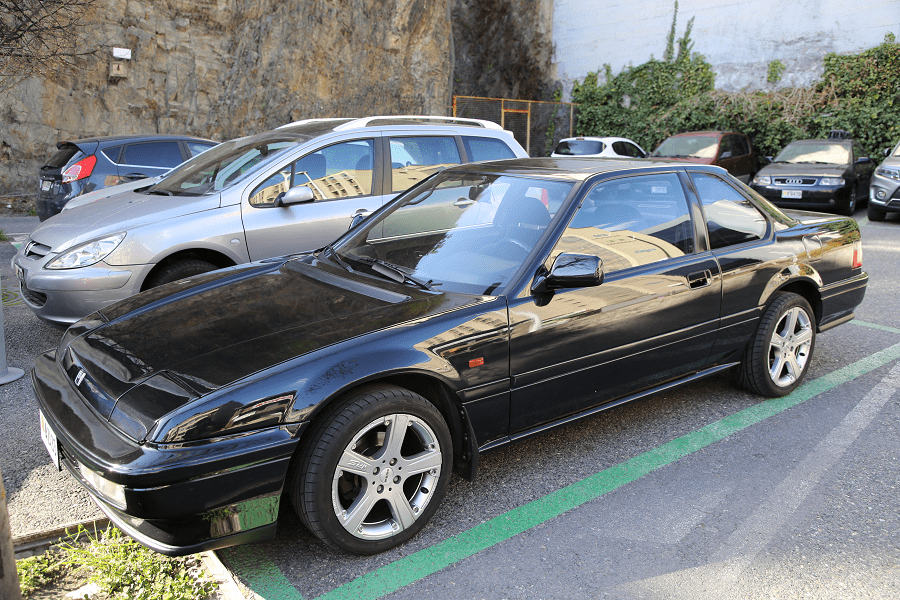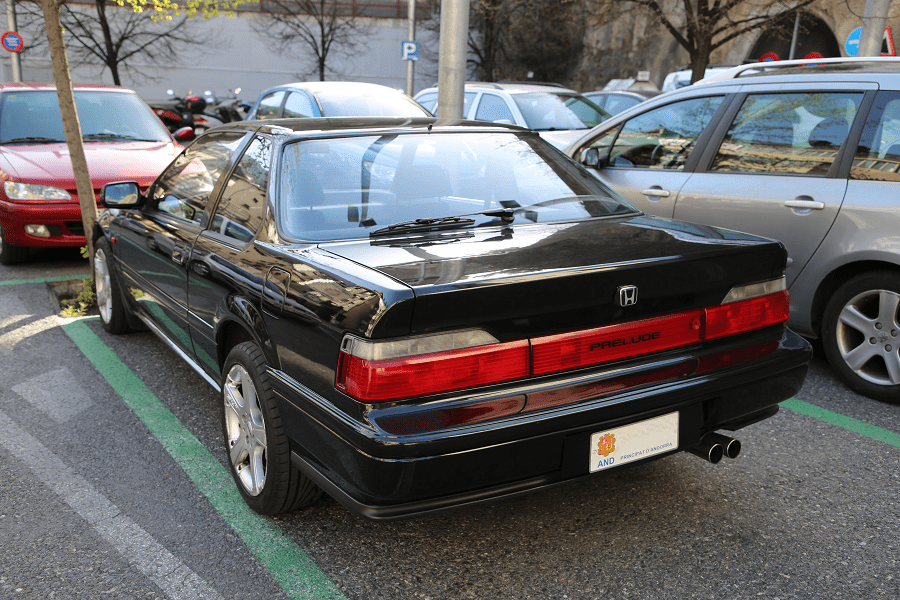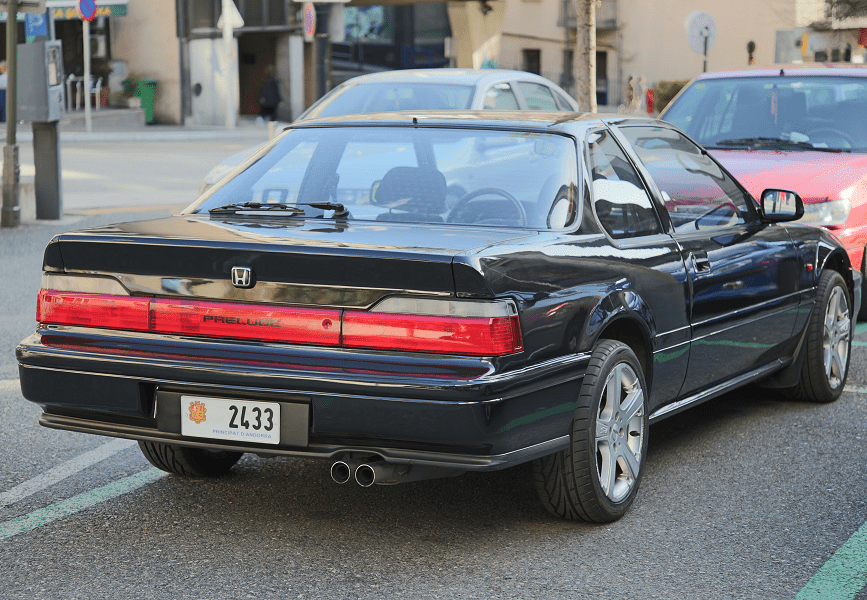Honda Prelude (BA7) Third Generation. Black version
On 9 April 1987, the third-generation Prelude was released in the Japanese domestic market and released later that year worldwide, being a 1988 model in North America. Featuring evolutionary styling from its predecessor, it shared design cues from the Honda NSX that would be introduced later in 1990.
The Prelude featured innovative features for its time such as a 0.34 drag coefficient, roof pillars made of high-strength metal and its signature feature, the available option of the world’s first mechanical four-wheel steering system available in a mass-production passenger car. Honda had expected 30% of buyers to plump for four-wheel-steering, but the car was a runaway success in the home market and 80% of buyers did in the first year.
The third-generation Prelude was exclusively powered by variants of the Honda B20A engine, a base carbureted version with a SOHC 12-valve valvetrain, or a DOHC variant with Honda’s PGM-FI fuel injection and 16 valves. The engine was tilted backwards by 18 degrees, which made it possible to make the hood 30 mm (1.2 in) lower than on the previous generation.













